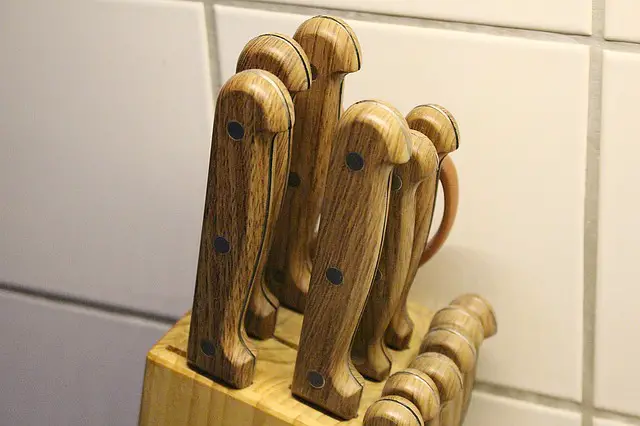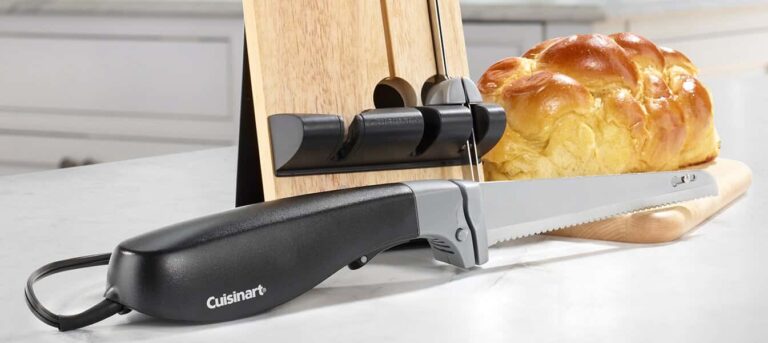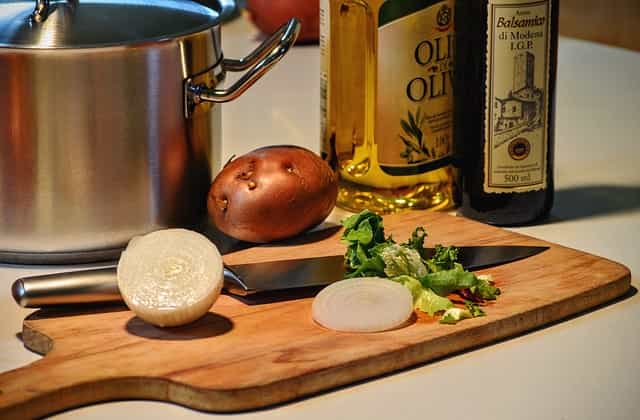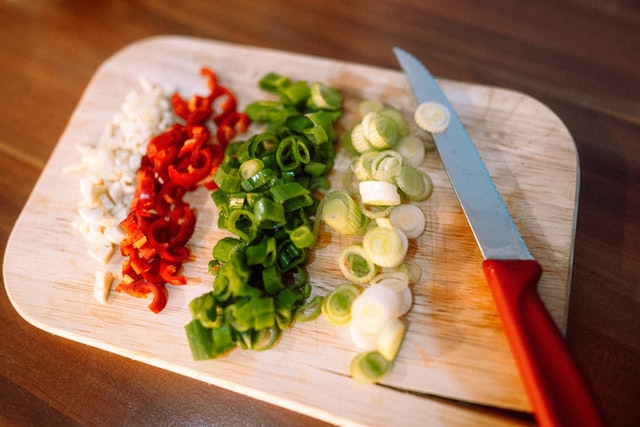Wood is one of the best handle materials that can come with your knife. I would know – having used knives with wood, plastic, and stainless steel handles in the past. There is just something about the allure of these wooden handles that make them stand out from the bunch.
That said, there is the question of which wood is truly the best for your blade’s handle.
Oakwood is the best wood handle material for a knife. The wood is lightweight, easy to work with, and also water-resistant. All that combines to give oakwood an edge over other common kinds of wood handle materials.
Stick around for other worthy alternatives to use when oak is not an option.
Table of Contents
Always go with Hardwood

Before we get into other kinds of wood that are great for knife handles – and why oak wood was the standout performer for me – we need to address one debate:
Hardwood vs softwood.
Most kinds of wood that you will come across will fall under these two categories. Oakwood is also a kind of hardwood even though it can occur in softer forms (think of your wine cork, for example).
So, hardwood refers to those wood materials that are obtained from naturally strong, deciduous trees. As the name implies, they are generally hard which means that not all hardwood can be used on knives. The best ones are those that are hard yet easy to work with and manipulate into different forms.
That way, they can be applied in different ways while still keeping the desired properties of hardwood that we want.
Enter softwood, and we have the opposite.
The fact that they are called softwood does not mean that you can bend them with your hands or anything like that. It is more of their internal physical compositions which make them more susceptible to fire attacks, insect breaches, water damage, and other flimsy situations.
They are, thus, not advised on knives.
Most (if not all) of the knife handles that you will see on the market today are made from hardwood.
What Makes Oakwood Special?
I have already mentioned some of these in the opening parts of the piece, but I’ll get into it deeper here.
With oak wood, you get all of:
- Lightweight – you don’t want your knife handle to contribute more to the final mass of the knife than usual. This feature plays out well here
- Water-resistance – since you’ll be washing the knife a lot (I’m assuming you use your knife as well as I do too), you should care about whether or not its parts will withstand water for long. Otherwise, you’re setting yourself up for a bad investment
- Durability – oakwood lasts long, longer than other forms of wood on average. You’ll get to enjoy your knife for longer. Even if there’s any fault on the knife, you’ll know it won’t come from the wood.
- Sunlight warping – oakwood is less likely to suffer warping when in sunlight for too long. This is one feature that rules out some other hardwood
- Affordable – for all the goodness that oakwood brings to the table, it manages to be on the affordable side still. I’d say that’s some impressive balance
- Polish – there’s a reason why manufacturers, not only buyers, love this wood. It brings out polishing and finishing very fine and makes it easy to stamp their marks on the wood body. Everything comes out beautifully.
- Attractive – I might be sentimental here, so I left this one for last. But won’t you agree with me that oak wood is just beautiful?
Other Great Woods for Knife Handles

As you know, oak is not alone in the line-up of amazing woods that you can have on a knife handle.
If you have also been following from the top, you know that I’ll only be discussing hardwood here.
That said, here are the other options that make the cut:
Walnut
Walnut gets a lot of praise because it is easy to work with and looks good too. However, the cost of using walnut makes it a less viable option for most manufacturers, especially when trying to keep their product margins low. Thus, when walnut is even used, it might be the veneers only instead of the solid wood.
Overall, the wood is dimensionally stable and offers resistance to water, insects, and wear and tear.
Rosewood
Rosewood is one of the rarest materials that is employed for wood handles. It is even considered banned in some regions, but not for the reasons that you might think.
The ban aims to curtail the illegal exploitation of the wood to make furniture and other woodworking materials, lest the tree goes into extinction.
That said, rosewood is not only popular for its rarity. It is also known for its high sheen when polished, which lends more credence to its attractiveness. You’ll also be mesmerized by the various shades that can feature on rosewood – from the usual golden brown of wood to a purplish finish.
The high water content of the wood, however, makes it susceptible to deformation. In small applications like the knife handle, you should not worry too much about that.
Birch
Perhaps the biggest takeaway from birchwood is how environmentally friendly the wood is.
On the one hand, it is so abundant that you can almost find birchwood in every country. The quantity in each country might differ, but that means they don’t have to be transported as much for use. They also grow very fast – faster than most other trees on this list – so they can be replaced as much as they are exploited.
For that kind of wood, though, you would not expect that they cost as much as they do. The fact that they are not as dimensionally stable as, say, oakwood or walnut wood, also makes them less desirable to those options.
Amboyna Burl
Do you want to splash out some serious money on your knife? Then go for a quality knife made with the amboyna burl handle.
The material is so scarce that these knives never used to make it to the stores back then. You could only purchase them from the select few manufacturers who were bold enough to make and carry them.
As time went on, and more people started putting more money on their knives, though, we are seeing more of these wood handles around. I am yet to physically come in contact with a knife using this wood material for the handle.
Lest I forget, the cost of an amboyna burl knife is justified. The manufacturers who make them are committed to quality and would not cut corners. Make sure you go with a reputable brand too.
Ebony
You won’t see a lot of ebony kitchen knives. When you do see them, though, that beautiful, shiny black hue does wonders on them.
Ebony wood is a little harder to work with and thus, requires a skillful manufacturer. That is one of the reasons why they are a little bit on the costly side, but surely not too expensive for comfort.
Ebony is also a closer-grained wood so it might be more challenging to print on it. However, I kinda love that part about the wood. It looks good on its own without any manufacturer trying to print anything on it in the first place.
What Makes Wood for Knife Handles Special?
After all, as I said earlier, knife handles can be made from a host of other materials too.
When you go with wood instead of those other materials, though, you get the following benefits:
- Environmentally friendly – this is a little dicey because illegal exploitation of the wood is bad for the environment. In a controlled setting, though, using wood allows us to go green and save the planet
- Availability – there is a reason why wood is the choice material when making knife handles at home. It is readily available in different forms near you, no matter where you live.
- Aesthetics – I never buy knives just for how good they look. At the same time, I would not put my money on an ugly knife. With wood, I stand the chance of getting a functional knife that looks beautiful too – and naturally so.
- Grip – if you have ever used a knife with a wooden handle before, I don’t need to be the one to tell you this. It is surprisingly easy to handle and use these wooden knives. When they are well-made from reputable manufacturers, that is.
- Durability – wood handles will last long, on average. Make sure to apply these knife maintenance tips to ensure your knife stands a chance of serving you for longer too.
- Affordability – and who doesn’t like an affordable knife? Cheap is bad, and not all of us can afford to splash money on the expensive picks. With wood, we can find those amazing knives that don’t make a hole in our pockets.
Taking care of wood knife handles
Getting a fine knife with a wooden handle is one thing. Taking good care of it is another pot of soup.
Here’s how to dive into that pot of soup without ruining the broth:
- Forget the dishwasher – the dishwasher will swirl your knife all over the place, cause taints on the handle, and soak all parts of the wood too. All that I have listed are recipes for disaster. So, always wash your wooden knives by hand.
- Oil the wood – this is not an everyday thing. Washing the knife handle will cause it to lose its glossiness and luster over time. Oiling brings that back. You don’t have to go shopping for some special oil too. Your canola/ olive oil at home will do the magic. For the best effects, Danish oil is preferred.
- Avoid the sun – I mentioned in some parts of the pieces that oakwood is great because it would not warp in the sunlight. Even at that, oakwood knife handles, as well as other wooden knives, should not be left in the sun.
- Dry after washing – some of the hardwood picks here might still let water in after washing. That is why you want to dry it off immediately.
- Store properly – not only great advice for wooden knives but all kinds of knives generally. Store them in a safe, dry place after usage. This could be inside drawers, in a knife block, or on a magnetic strip.
Combine the tips above with other general knife maintenance tips and your knives start to last longer.
Let’s Log It
And thus, we come to the end of this piece.
If you were wondering what the best wood for knife handles was, you now have that – as well as other pieces of wood you can use. I also throw in a resource on how best to care for your wooden knife handles.
Should there be anything more that you want to know which I missed, the comments section is always there to get my attention.








